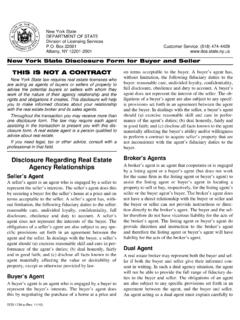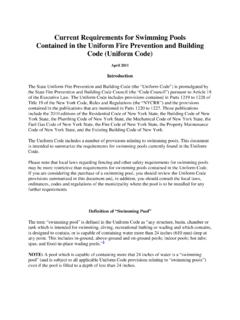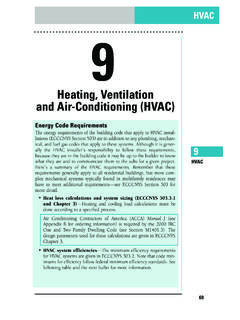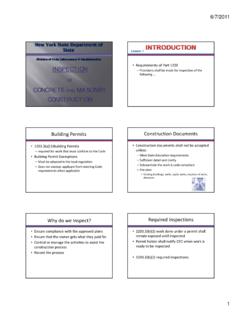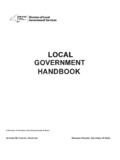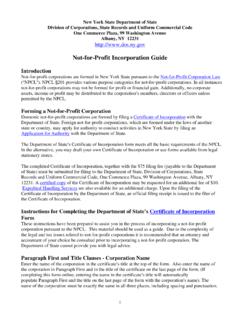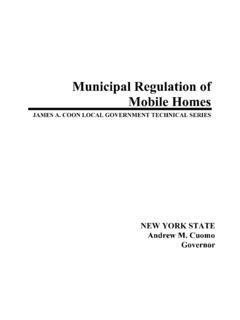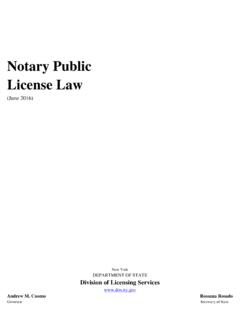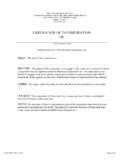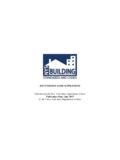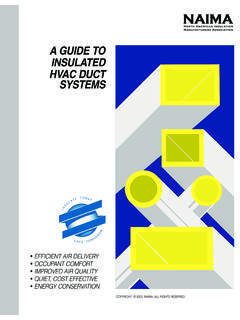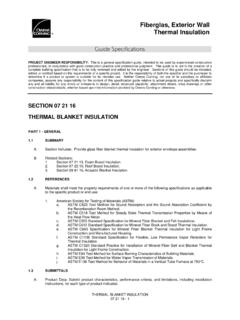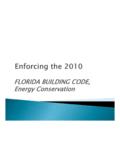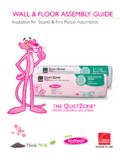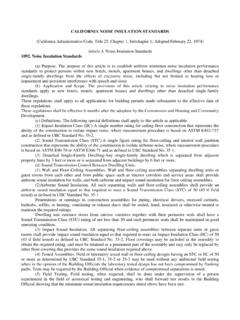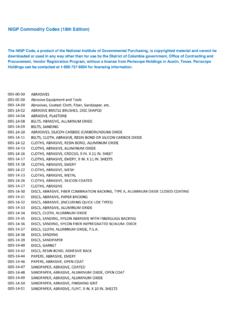Transcription of Foundation - New York Department of State
1 296 Foundation6 FoundationFoundationFoundation MoistureAside from structural concerns, the most important consideration forfoundation design is moisture. No client wants a wet basement. No clientwants a damp basement. No client wants mold in their basement. Thebest way to ensure that a Foundation stays dry most of the time is toinclude: Proper drainage Capillary breaksYou can t go back to add these later (for a reasonable cost) so the time todo it is when you build the Foundation (see Figure ). This applies tofull foundations , to crawlspaces, and to slab-on-grade with these precautions, the Foundation walls may still be damp attimes.
2 You can t guarantee that mold won t grow. You canminimize thepotential for conditions that foster mold growth, and maximize the poten-tial for walls to dry when they do get wet. Although the code calls for avapor retarder on the interior (warm in winter) side of insulated founda-tion walls, a vapor retarder is not recommendedon either side of thewall, to facilitate drying. The figures in this chapter show several possibil-ities for relatively forgiving, mold-resistant, insulated basement wallassemblies. If the proper drainage and capillary breaks are not present, itis better notto build a conditioned basement so that the Foundation wallsdo not need Code RequirementsAll basement spaces must be defined as conditioned or uncondi-tioned.
3 See page 21, and Figures BasementsIn a conditioned basement, you must:30 Foundation6 Foundation Insulate the Foundation walls on the inside or the outside of the required R-value depends on the results of your complianceanalysis. insulation must extend from the top of the wall to a depth belowgrade that is determined by climate (ECCCNYS , , ). See table below for specific Table insulation DepthHeating Degree Days*Depth Below Grade 600024"6001-800048" 800184"* See page 31 for more information about Heating Degree Days. Insulate the band joist of the floor framing above the basement.
4 Seal air leaks in the Foundation walls and slab floor, as well as the sill/ band joist area. If the Foundation is insulated with rigid foam on the exterior , the insu-lation must be protected with a rigid, opaque and weather-resistantbarrier that extends at least 6" below grade (ECCCNYS ).Important note:When you are doing compliance analysis on a condi-tioned basement, you must look at each basement wall separately anddetermine, wall by wall, whether the wall is more than 50% above gradeor more than 50% below grade. Walls that are 50% or more above grade,must be added in with above grade walls in your calculations, and insu-lated to the same R-value.
5 Walls that are more than 50% below grade aretreated as basement walls. Unconditioned BasementsIn an unconditioned basement, you must: Insulate the floor above the basement. The required R-value dependson the results of your compliance analysis. Insulate the stairwell between the basement and conditioned firstfloor. Insulate heating pipes and air ducts in the basement. Seal the ducts in the basement. Seal air leaks in the floor system between the basement and the firstfloor, such as wiring and plumbing penetrations, and weatherstrip-ping on the basement door. Include the basement door in your perimeter (edge) insulation must be installed where the slab is partof the conditioned space of the house.
6 This includes a slab-on-grade houseor addition, the walkout portion of a heated basement, or a breezeway thatshares a slab with the perimeters must be insulated where the top edge of the slab is abovegrade, or less than one foot below grade (see Figure ). The R-value touse depends on the results of your compliance analysis. If the slab edgeinsulation is on the exterior , the insulation must be protected with a rigid,opaque and weather-resistant barrier that extends at least 6" below grade(ECCCNYS ).Slab perimeter insulation must run all the way to the top of the slab.
7 Itmay go down, or down and across, for a total of 24" (climates less than6000 HDD) or a total of 48" (climates more than 6000 HDD). If you areusing the ECCCNYS Chapter 6 tables, 48" slab insulation is required inclimates over 5,500 HDD according to table See Figures examples. Note: Heating Degree Days (HDD) are a measure of how severe theheating season is. With the exception of the southeast corner of the State (Orange, Putnam, Rockland and Westchester Counties, New york Cityand Long Island), all of New york has a climate of greater than 6000 floor over a vented crawlspace construction must be insulated to thesame R-value as a floor over an unconditioned basement, according to thecompliance analysis.
8 The walls of an unvented crawlspace must be insu-lated according to the R-value shown in the compliance analysis for crawlspace walls. ENERGY STAR To achieve the ENERGY STAR rating, you may need to put slightly moreinsulation in your basement walls (or the floor over the basement) thanyou would to meet the code. Other recommendations: Install at least 4" of uniform sized, washed stone underneath the slabfloor. This acts as a capillary break to help prevent absorption ofground moisture. It also makes it easy to add a sub-slab ventilationsystem for radon mitigation, if radon is found after construction (seepage 116).
9 Insulate basement slabs, even in unheated basements. 1" of rigidpolystyrene foam under the slab will keep it warmer in summer and 32 Foundation6 Foundationreduce the chance of condensation which can wet the slab and leadto mold and mildew. This will also improve comfort and reduce mois-ture problems if the basement is finished off later. Do not install carpeting on below-grade slab floors unless the slab isinsulated under its entire area, and the Foundation is well from condensation on an uninsulated slab, or drawn up bycapillary action can lead to hidden mold and mildew problems in car-pets.
10 Always insulate under the entire surface of radiant heated slabs, eventhough the code does not require it. Most radiant equipment manu-facturers specify insulation under the slab; if you are heating the slab,the insulation will reduce heat loss and improve comfort. Because ofthe high temperature of radiant heated slabs, a minimum of R-15rigid insulation is suggested even though manufacturers may recom-mend less. Try to avoid crawlspaces. Where you do build over a crawlspace, becertain that the vapor retarder on the crawlspace floor is completelysealed at all seams and penetrations, and sealed to the or Unconditioned?
